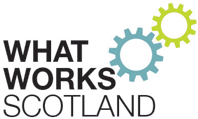 Professor James Spillane, from the School of Education and Social Policy at Northwestern University explains why he considers distributive leadership a fascinating topic and essential to successful school leadership.
Professor James Spillane, from the School of Education and Social Policy at Northwestern University explains why he considers distributive leadership a fascinating topic and essential to successful school leadership.In most societies we develop an early fixation with heroes and heroines; their charisma, gallant acts, and superhuman traits are the subject of folklore, fiction, and social science writing. Much of the literature on leadership falls into this tradition, what Yukl (1999) calls the ‘heroic leader paradigm.’ This cognitive framework is leader centric focusing on the traits, characteristics, and behaviours of leaders. Heroes and heroines matter, but the heroic leader paradigm sets organisational leaders up for disaster, especially when it comes to managing human development work such as teaching, counselling, and social work. An alternative perspective is needed to face the challenges of leading and managing in a new century.
A Distributed Perspective
A distributed perspective is a lens or conceptual tool for thinking about leadership and management in organizations (Spillane, 2005). It is not a blueprint for doing leadership per se, but a framework to guide and focus our diagnosis and design work as organisational leaders. There are two key aspects – the leader plus aspect and the practice aspect.
The leader plus aspect involves a recognition that the work of leading and managing human development practice extends beyond the person at the top of the organization, the woman or man in the corner office. This aspect also involves other formal leaders, and potentially individuals who have no formal leadership position but exercise influence by virtue of their expertise or skill. Taking the leader plus aspect seriously necessitates focusing on how the work of leading is arranged among staff and stretched over two or more individuals.
The practice aspect of a distributed perspective, makes practice the core anchoring issue. A practice orientation focuses on how leadership actually gets done - what people actually do, how they do it, and why they do it. A distributed perspective, however, frames practice in a very particular way; it sees leadership practice as a product of the interactions of leaders, followers, and their situation (Spillane, Halverson, & Diamond, 2001; 2004). This view of practice differs from the dominant perspective that sees practice as equivalent to the actions or behaviours of an individual leader. Individual actions are important but they are not practice. Practice is about interactions, not just actions. A leader acts, someone reacts, and the leader or someone else reacts again – practice is in the exchange between leaders and followers, not the isolated acts. Hence, to diagnose practice we must focus on interactions as distinct from the actions of leaders.
Human interactions are unpredictable, difficult to script. Thus, practice involves improvisation. As a result, we cannot design practice. But, we can design for practice and we can do that by designing aspects of the situation or organizational infrastructure that shape how people interact with one another. Taken for granted aspects of our daily work situations such as the organizational routines we participate in, the tools we use, and the teams we are assigned to fundamentally influence how we interact with one another. Designing and redesigning aspects of this infrastructure can transform interactions and by extension change practice.
And finally…
Lots more information – papers, instruments, and teaching modules at http://www.distributedleadership.org/
Views expressed by guest bloggers may not reflect the views of What Works Scotland

No comments:
Post a Comment
Note: only a member of this blog may post a comment.